
Roots
Consider for a moment the very strands that spring from the scalp, coiled and resilient, holding within their structure not merely protein and pigment, but generations of story. For those with textured hair, this crown is more than an aesthetic feature; it is a profound connection to ancestry, a living archive of identity and struggle, perseverance and ingenuity. The careful tending of this hair has long been a sacred act, a dialogue with the natural world, drawing upon compounds gifted by the earth itself.
What shielded these precious fibers from the elements, nourished their growth, and sustained their unique form across continents and centuries? The answer lies in the deep wisdom of our foremothers and the elemental compounds they knew intimately.

Hair Anatomy and Its Ancestral Understanding
The unique helices that define textured hair, from gentle waves to tightly coiled patterns, present specific structural considerations. Unlike straight hair, which tends to lie flat and smooth, each curl possesses a distinctive elliptical cross-section and an uneven distribution of keratin, the protein that forms the hair shaft. This inherent design, while beautiful, often results in a cuticle layer that is more open or raised, allowing moisture to escape more readily.
From an ancestral perspective, this characteristic was recognized not as a flaw to be corrected, but as a trait requiring specific, thoughtful care, a dance with nature’s offerings to maintain hydration and strength. The quest to understand these intrinsic qualities guided early hair care rituals, long before microscopes revealed the micro-details of a single strand.
For generations, African communities recognized the distinct needs of their varied hair forms. The resilience and sometimes the fragility of textured hair were observed keenly. They knew that the sun, wind, and daily manipulation could diminish its vitality.
Their botanical knowledge, therefore, focused on properties that modern science now confirms ❉ moisture retention, elasticity, and protection against environmental stressors. This intuitive understanding of what the hair required, deeply tied to daily life and climate, paved the way for the consistent use of certain natural substances.
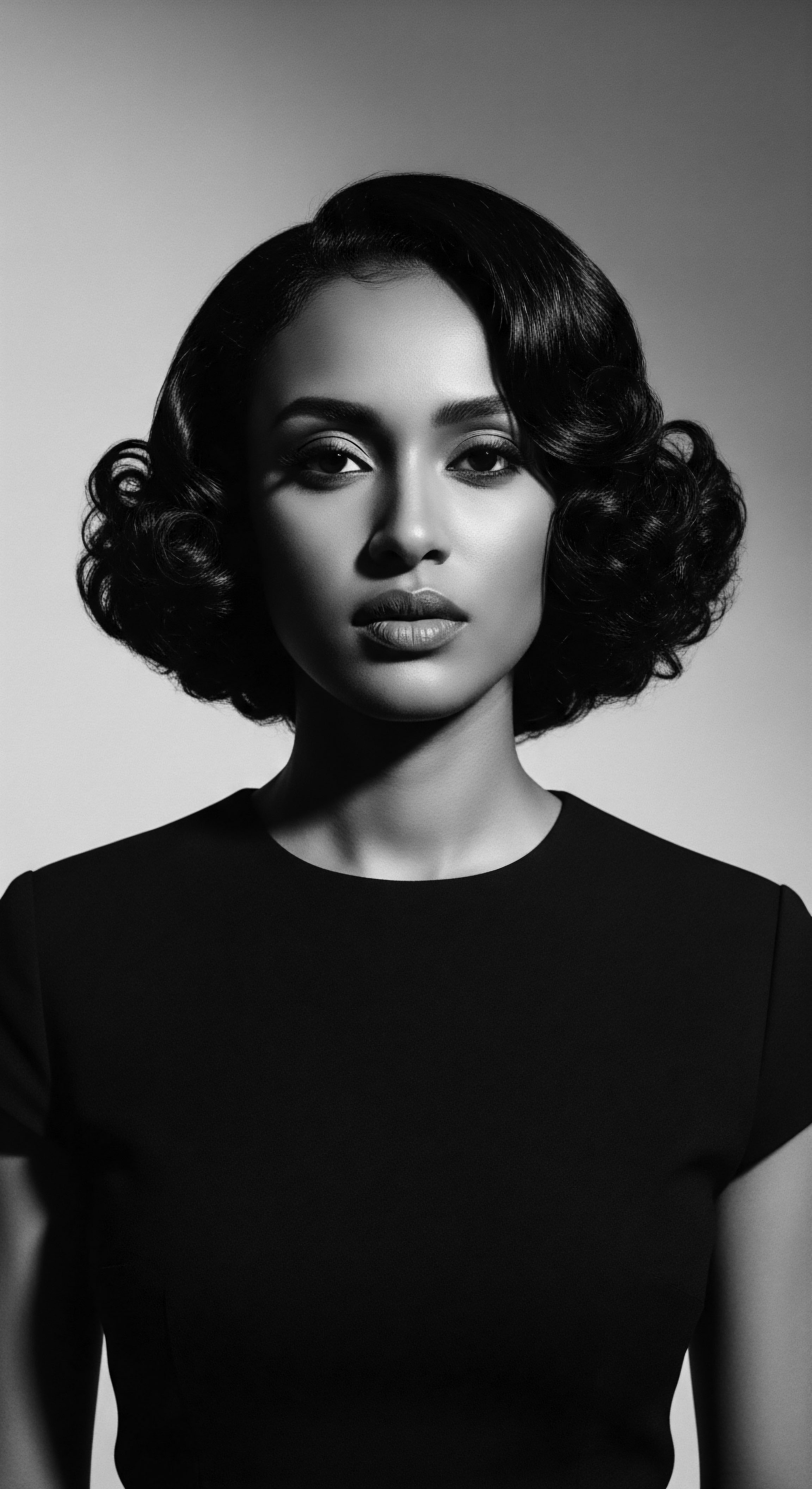
Traditional Classifications of Hair Texture
While contemporary systems classify hair based on curl pattern (from straight to coily), ancestral communities often understood hair not just by its visible curl but by its feel, its response to moisture, and its symbolic weight. Hair was categorized by its health, its shine, its ability to hold a style, and its connection to a person’s lineage or social status. The very words used to describe hair in various African languages often spoke to its texture and its spiritual significance. These classifications were rooted in a practical, lived interaction with hair, where the right natural compound for a particular type of hair was known through intergenerational practice.
Natural compounds have shielded textured hair for generations, their wisdom echoing through cultural memory and ancestral practices.
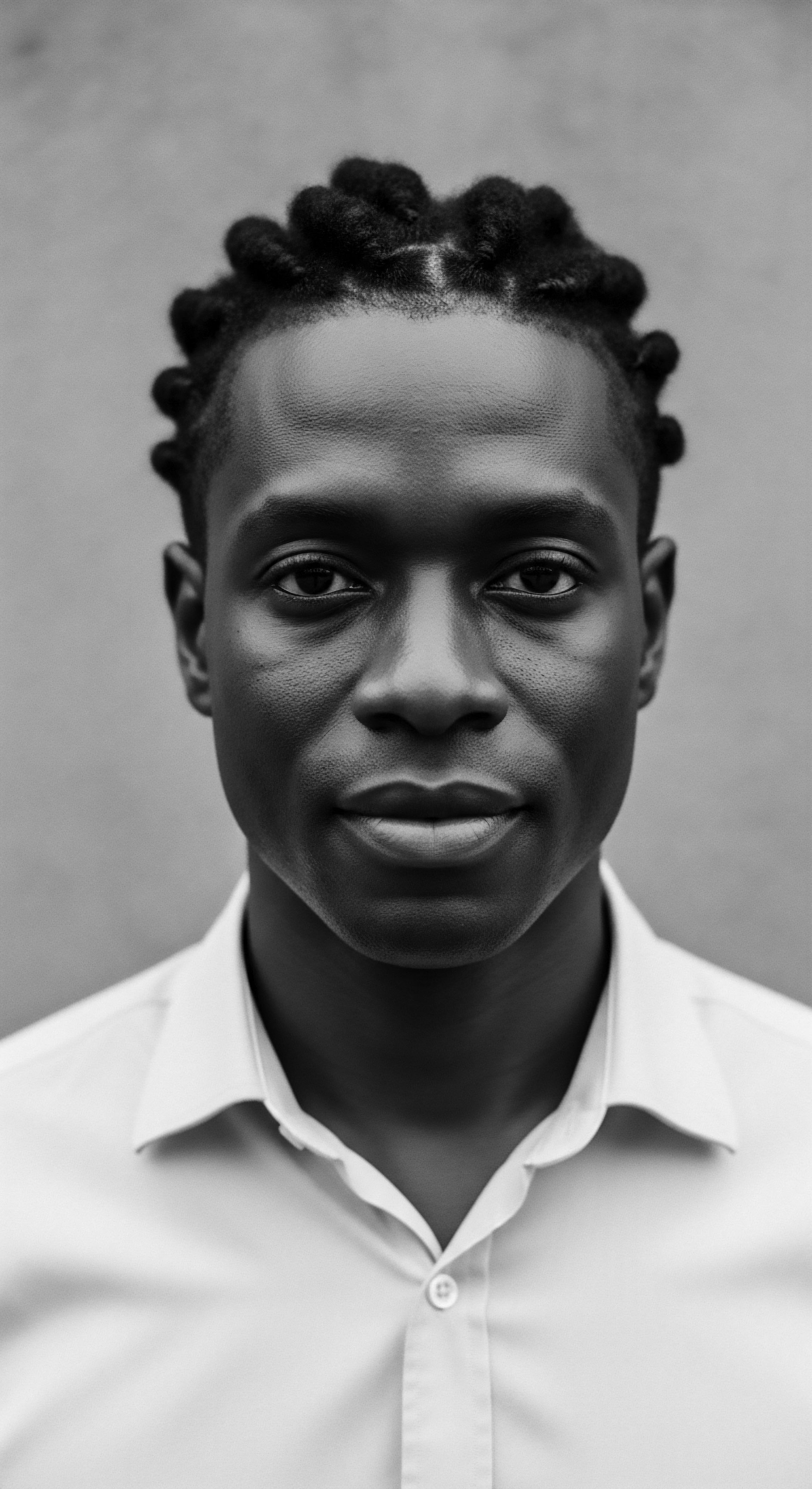
Essential Language of Ancestral Hair Care
The lexicon of textured hair care, born from generations of observation and practice, includes terms that describe not only hair types but also the plants and methods used to tend them. These terms carry the weight of tradition.
- Shea ❉ Refers to the butter from the karité tree, revered across West Africa for its moisturizing qualities.
- Chebe ❉ A powder derived from specific plants by Basara women in Chad, traditionally applied to hair for strength and length retention.
- Moringa ❉ Known for its nutrient-rich leaves and seeds, utilized in some communities for its cleansing and fortifying properties.
- Aloe ❉ A succulent plant whose gelatinous interior offers soothing and hydrating benefits for scalp and strands.
- Amla ❉ Indian gooseberry, valued in Ayurvedic tradition for its ability to promote hair vitality and address premature graying.
These names are more than labels; they are capsules of heritage, connecting the modern user to the earth-derived remedies of ancestors.

How Did Ancient Practices Influence Hair Growth Cycles?
Ancient communities, observing the rhythmic shedding and growth of hair, understood the need for consistent, gentle care. While they did not possess the scientific vocabulary of anagen, catagen, and telogen phases, their practices intuitively supported these cycles. Scalp massage, often performed with nourishing oils, stimulated blood flow, creating a hospitable environment for new growth. Herbal rinses and masks were applied to maintain scalp hygiene, preventing conditions that could hinder healthy hair renewal.
Consider the traditional practice of using Ziziphus Spina-Christi leaves in Ethiopia for anti-dandruff properties, which directly addresses scalp health, a prerequisite for robust hair growth. This botanical knowledge supported the hair’s natural inclination to flourish, protecting it through various stages of its life.

Ritual
The care of textured hair has always transcended simple hygiene; it is a ritual, a profound act that binds generations and preserves cultural identity. The compounds used were not merely ingredients; they were elements of ceremony, applied with intention and passed down with reverence. This living heritage informs our appreciation of how natural substances guard these unique strands, making them resilient and vibrant through centuries of styling and adornment.
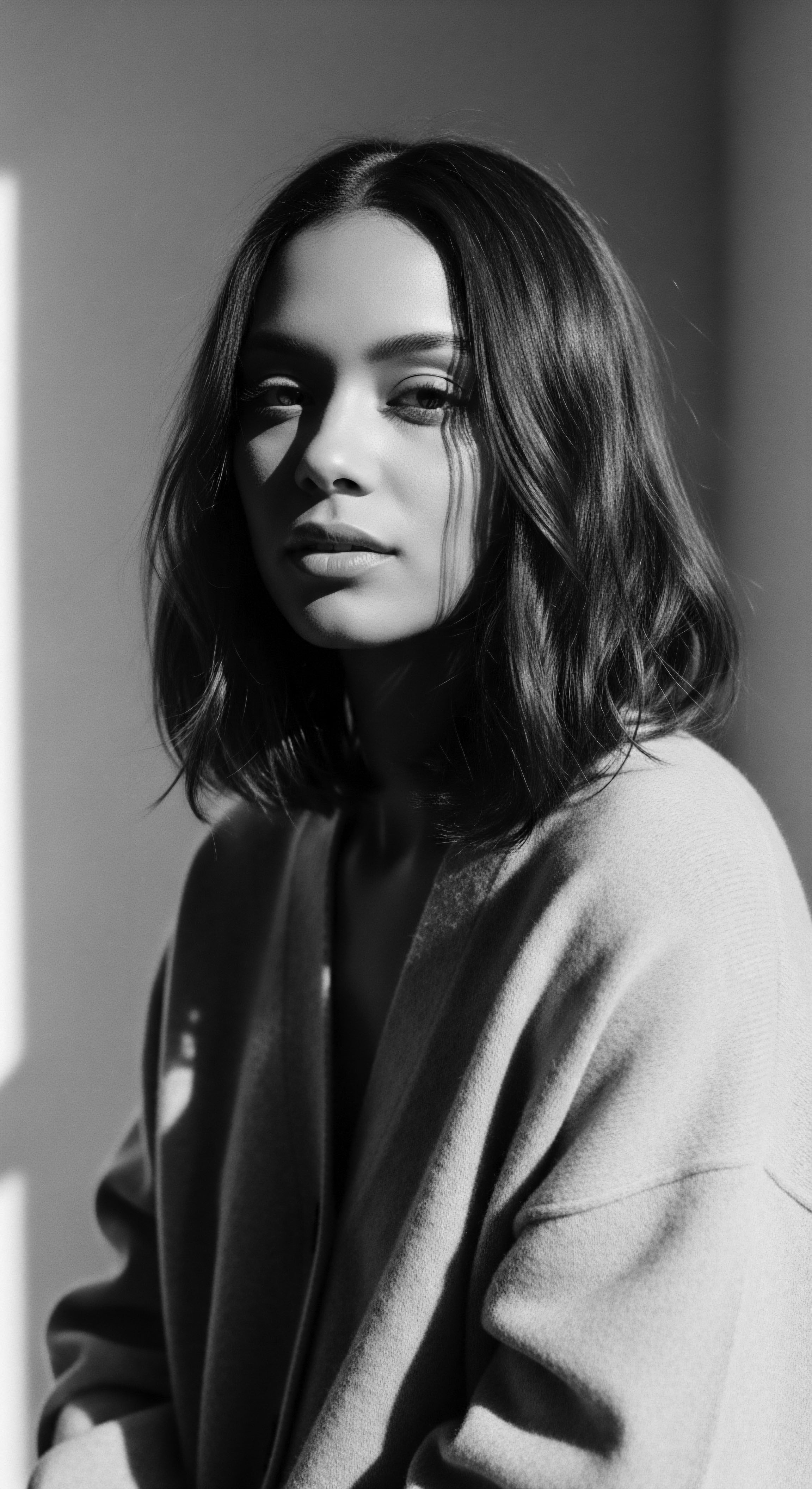
Protective Styling From Ancient Roots
Protective styling, a hallmark of textured hair care today, has its roots in ancient practices designed to shield hair from the elements, minimize manipulation, and promote length retention. Braids, twists, and locs, some of the earliest forms of protective styles, were not simply decorative. They were often intricate maps of social status, marital availability, and even tribal affiliation. Before these styles were created, hair was prepared with natural substances to render it pliable, strong, and less prone to breakage.
For example, shea butter, a cornerstone of West African hair care for centuries, provided both the slip necessary for precise braiding and a protective barrier against dryness. Women in various communities applied shea butter to sectioned hair, massaging it into the scalp and coating the strands, before and after washing. This historical precedent illustrates how styling was intrinsically linked with the application of natural protectors, creating styles that were both beautiful and functional for the health of the hair. The Himba women of Namibia, whose hair traditions incorporate ground ochre, goat hair, and butter into dreadlocks, offer another vivid example of how natural compounds are interwoven with styling for both protection and cultural expression.

Natural Styling and Defining Techniques
The desire to define and enhance the natural curl pattern of textured hair has long existed, albeit with different aesthetic goals than today’s “wash and go.” Ancestral methods for setting curls or elongating strands often involved water and natural emollients. Techniques like hair threading, particularly prevalent among the Yoruba people of Southwestern Nigeria since the 15th century, stretch hair without heat, preserving its strength. While the primary aim was length retention and styling rather than maximum curl definition, the substances used were always gentle.
Compounds with mucilaginous properties, such as those from flaxseeds or aloe vera, likely played a role in providing hold and moisture. Oils and butters helped to seal in hydration after water application, allowing curls to clump and reduce frizz. The understanding was that natural forms and moisture were companions, not adversaries.
The intentional application of natural compounds during styling transformed routine care into a generational act of identity and shield.
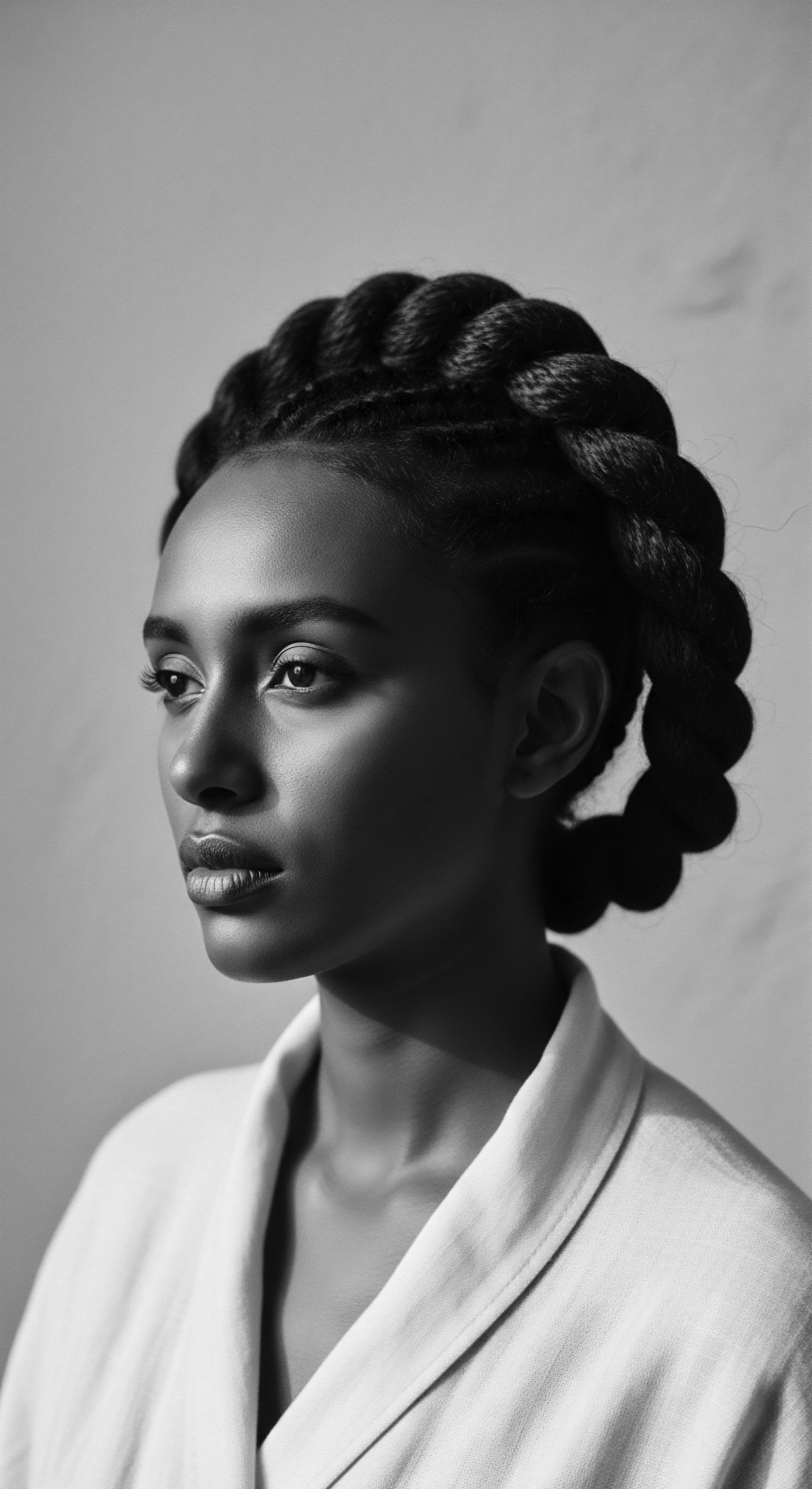
Historical Uses of Wigs and Hair Extensions
The adornment of hair through wigs and extensions also holds deep historical precedent, extending far beyond contemporary fashion. Ancient Egyptians, for instance, used wigs as early as 2700 B.C. not only for aesthetic purposes but also as protection against the sun.
While specific natural compounds were not always the direct material of these extensions, the care of the natural hair beneath them would have necessitated the use of nourishing oils and cleansing herbs to maintain scalp health and prevent damage. This highlights a continuous thread of protective practices, whether through styling or augmentation, to safeguard the inherent vitality of the scalp and its growing fibers.

How Did Traditional Methods Manage Heat and Protection?
The concept of applying heat to hair, while often associated with modern tools, has traditional counterparts. However, ancestral methods were typically gentler and focused on drying or shaping rather than extreme thermal manipulation. Sun drying, for instance, might be combined with the application of oils to mitigate potential desiccation.
In some historical contexts, warm stones or mild coals might have been used cautiously for localized drying or to assist in straightening, but always with compounds that offered a buffer against damage. The awareness of hair’s fragility meant that any form of heat was approached with substances that would coat and protect the strands, often with oils that also served as moisture barriers, a stark contrast to the high-heat tools of today that strip hair of its natural moisture.
Consider a typical traditional West African preparatory ritual before braiding or twisting ❉
- Water Application ❉ Hair would be dampened with water or a mild herbal rinse.
- Emollient Massage ❉ A generous amount of shea butter or palm oil would be massaged into the hair, from root to tip.
- Sectioning and Detangling ❉ Hair would be carefully sectioned, and detangled with fingers or wide-toothed wooden combs.
- Braiding or Twisting ❉ The hair would then be skillfully braided or twisted, often with family or community members.
This systematic approach prioritized moisturizing and softening the hair before manipulation, inherently protecting it.
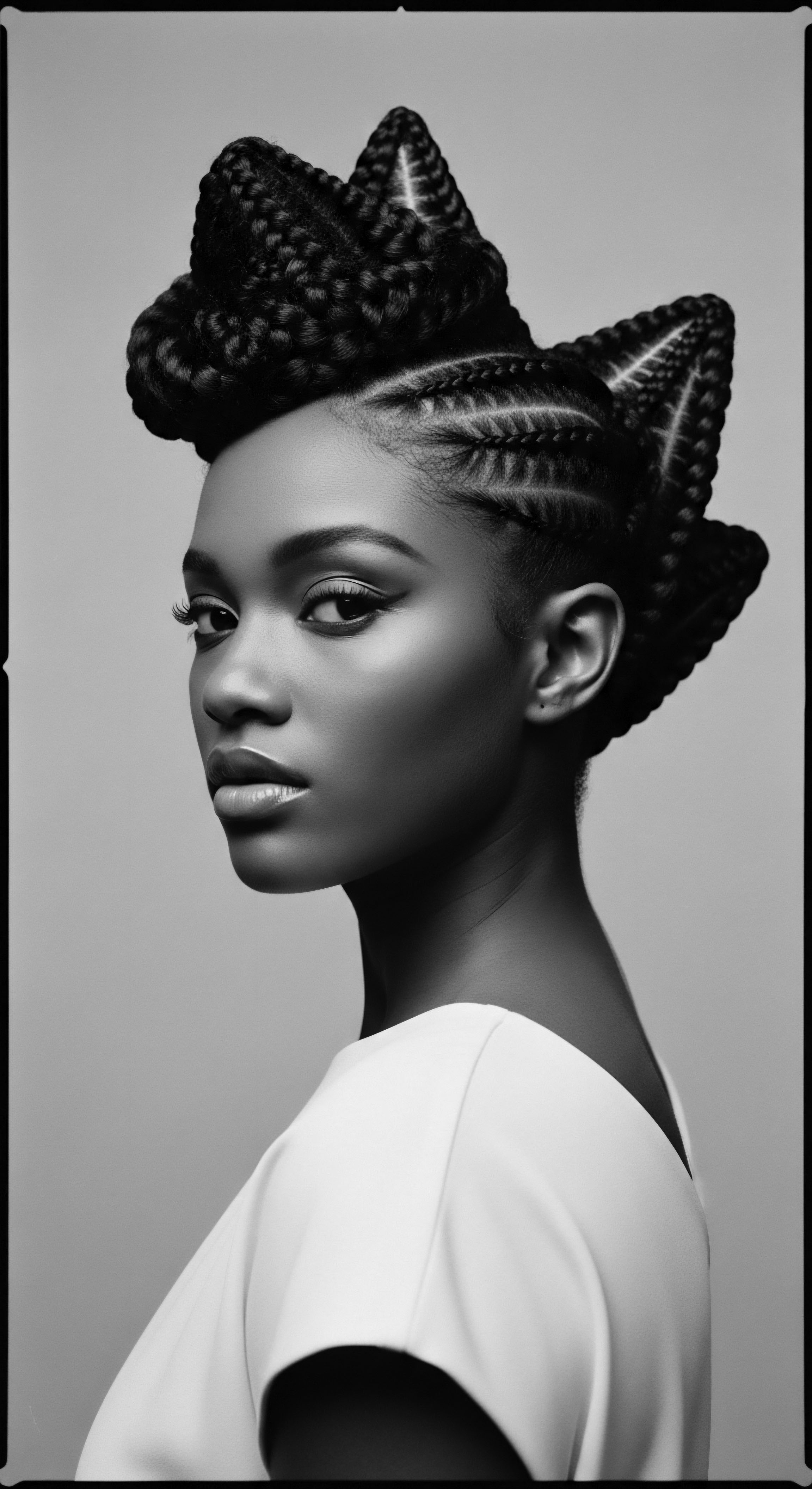
Relay
The lineage of textured hair care, a complex interplay of inherited knowledge and evolving understanding, continues its relay through time. Here, the ancestral compounds, once understood purely through observation, find their modern scientific explanations, affirming the wisdom of those who came before us. This deeper look into their properties solidifies their protective capacity for textured hair, a testament to enduring heritage.

Crafting Care Regimens From Ancestral Blueprints
The creation of a personalized hair care regimen for textured hair is not a modern invention; it is a contemporary expression of ancestral practices. Our forebears intuitively understood that hair health was intertwined with overall wellbeing and the specific environment. They built routines around what was available from their surroundings and what their hair demanded. Today, we refine these blueprints with scientific insights, yet the core principles remain ❉ cleanse gently, hydrate deeply, and protect diligently.
The traditional use of plants like Sesamum Orientale leaves for hair cleansing in Afar communities of Ethiopia provides a historical parallel to modern shampoos, highlighting the long-standing understanding of botanical cleansing agents. This historical context informs how we view modern hair regimens, seeing them as a continuation, rather than a departure, from time-honored approaches.

The Evening Sanctuary Essential Sleep Protection
The protection of textured hair during sleep is a practice steeped in practicality and cultural wisdom, often dating back centuries. The inherent dryness and structural qualities of textured hair mean it is particularly vulnerable to friction and moisture loss overnight. Enter the satin or silk bonnet, a seemingly simple accessory with deep protective roots.
While modern bonnets offer a refined version, the concept of covering and safeguarding hair during rest has been a part of Black hair care heritage for generations, likely originating from head wraps and cloths used for both protection and modesty. These coverings minimized tangling, preserved moisture, and reduced breakage from abrasive bedding materials, a tangible link to ancestral knowledge.
Generations of care, from ancestral oils to modern bonnets, affirm the enduring commitment to textured hair’s resilience.
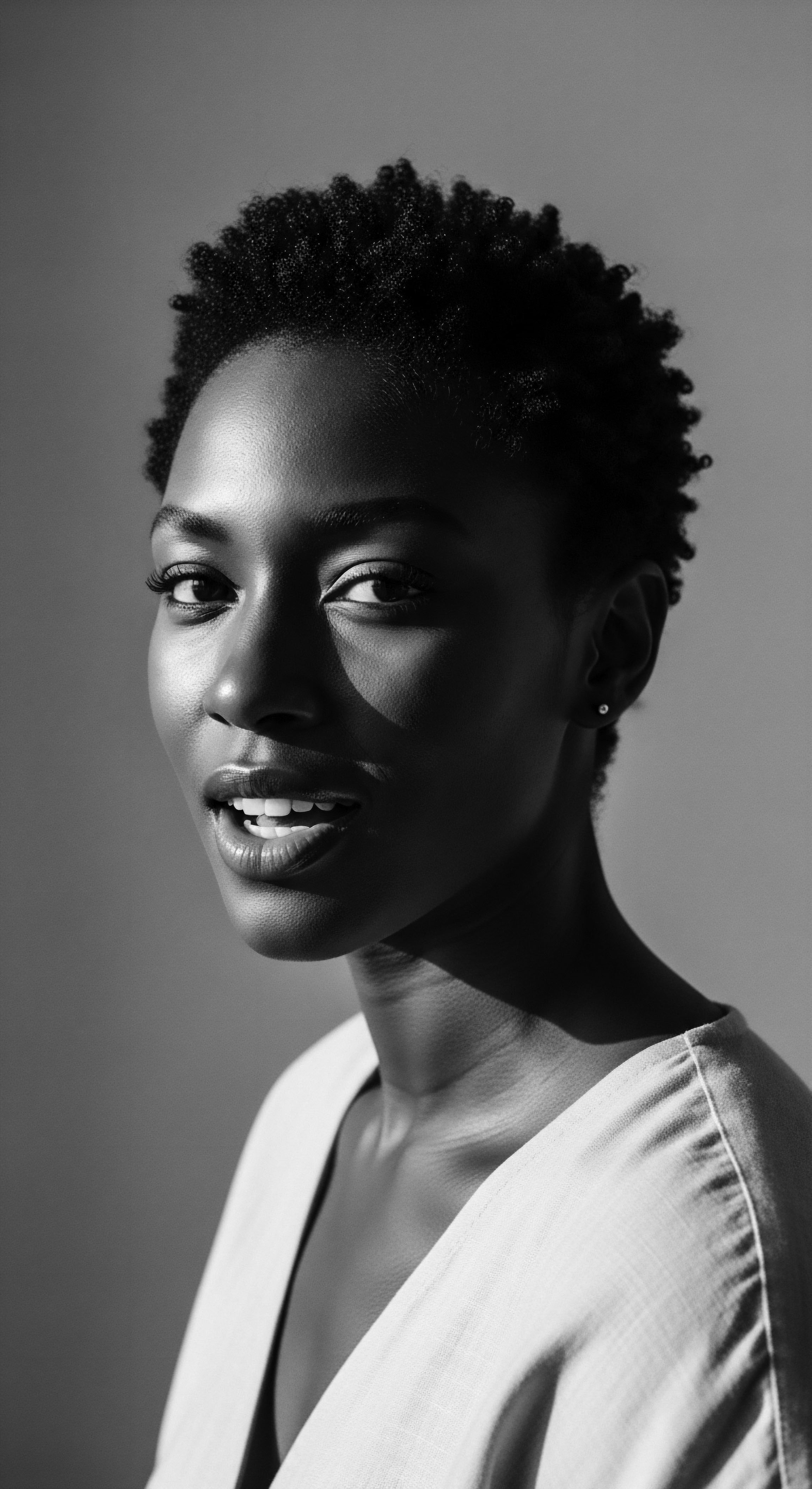
Understanding Compounds Protecting Hair From UV Radiation?
Among the myriad natural compounds that defend textured hair, certain phytochemicals possess remarkable capacities to shield against environmental aggressors, particularly ultraviolet radiation. Textured hair, with its often more open cuticle, can be more susceptible to UVR-induced damage, which can alter the hair’s surface, permeability, and keratin structure.
A recent study by Markiewicz and Idowu (2024) explored the protective capacities of natural compounds like Mangiferin, Ferulic Acid, and Naringin. Their research demonstrated that a conditioner formulated with these ingredients significantly reduced structural damage and oxidative stress caused by UVR in textured hair, showing that such a formulation would be especially advantageous for curls, which are more susceptible to UVR damage than straight hair. These compounds, often found in plants like mango leaves, rice bran, and citrus fruits, offer antioxidant and UV-absorbing properties, validating the intuitive choice of plant-based remedies in sun-drenched regions throughout history.
| Traditional Name/Source Shea Butter (West Africa) |
| Ancestral Application Applied as a moisturizer, detangler, and styling aid before protective styles. |
| Scientific Understanding of Protection Rich in fatty acids (oleic, stearic) and vitamins (A, E), providing a occlusive barrier, reducing transepidermal water loss, and offering mild UV protection. |
| Traditional Name/Source Coconut Oil (Various regions including Caribbean, South Asia) |
| Ancestral Application Used for pre-shampoo treatments, conditioning, and scalp health. |
| Scientific Understanding of Protection Contains lauric acid, a small fatty acid that can penetrate the hair shaft, reducing protein loss and providing antibacterial properties. |
| Traditional Name/Source Aloe Vera (Various arid regions) |
| Ancestral Application Applied to soothe the scalp, provide moisture, and define curls. |
| Scientific Understanding of Protection Contains glycoproteins and polysaccharides, offering anti-inflammatory, moisturizing, and humectant properties. |
| Traditional Name/Source Amla Oil (India, Ayurvedic traditions) |
| Ancestral Application Used to strengthen hair, reduce graying, and prevent infections. |
| Scientific Understanding of Protection Rich in Vitamin C and antioxidants, protecting melanocytes from oxidative damage and exhibiting antifungal effects. |
| Traditional Name/Source The convergence of ancestral wisdom and modern science confirms the protective properties of these earth-derived compounds for textured hair's enduring vitality. |
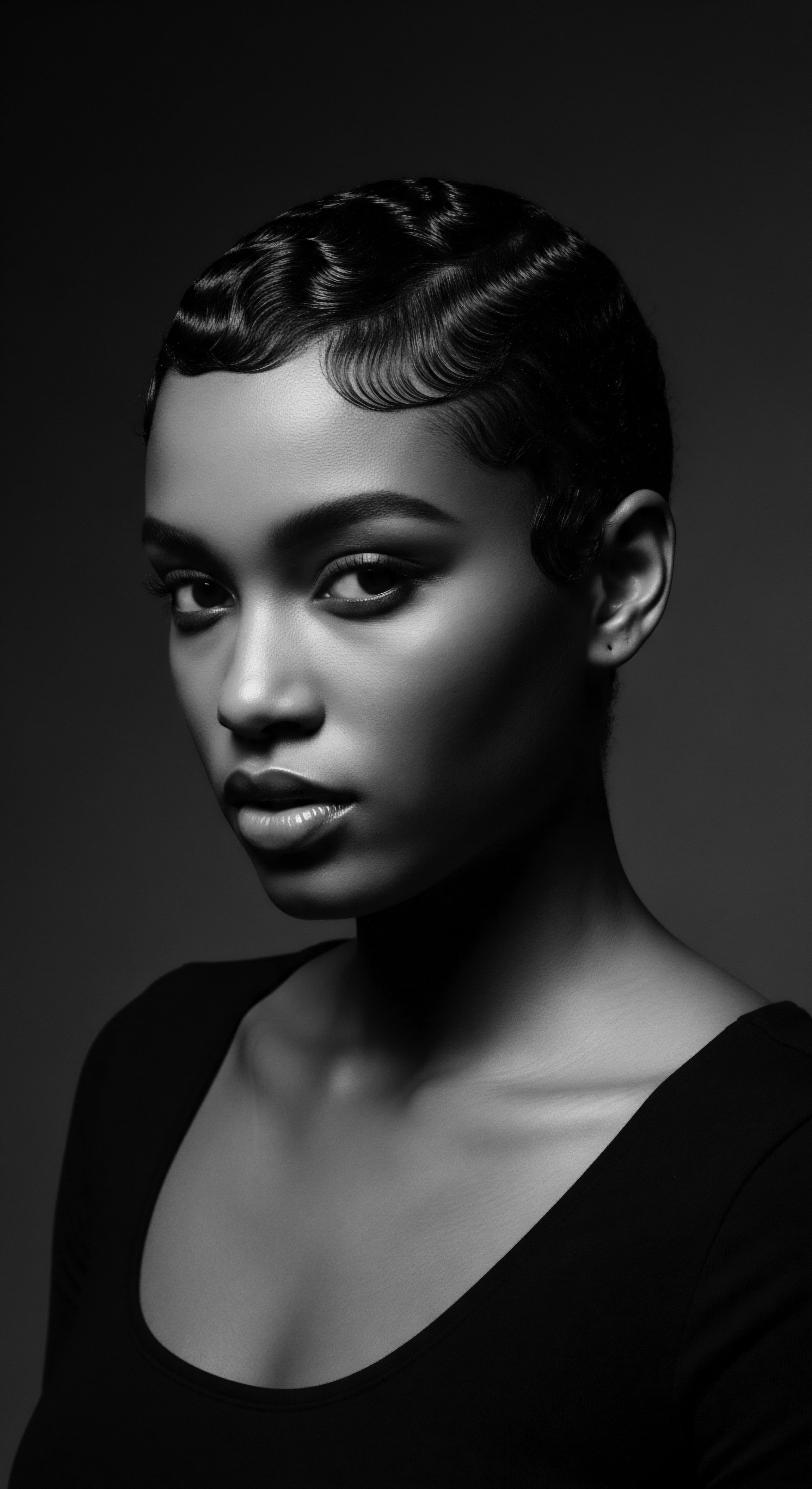
How Does Holistic Wellness Connect to Hair Health?
The concept of holistic wellness, where the health of the body and mind influences the condition of the hair, is not a new age phenomenon; it is an ancestral tenet. Many traditional healing philosophies viewed the body as an integrated system. What we consume, how we manage stress, and our overall vitality all leave their mark on our hair. Poor nutrition, for example, deprives hair follicles of necessary building blocks, potentially affecting strength and growth.
Ancestral wellness philosophies often incorporated practices that nourished the body from within, understanding its ultimate reflection in external health. Herbal teas, nutrient-rich foods, and stress-reducing rituals contributed to a body that could support vibrant hair. This perspective reminds us that topical applications, while beneficial, are but one part of a comprehensive care strategy, a principle long held by those who honored hair as a barometer of overall balance.

Reflection
The journey through natural compounds and their protective role for textured hair reveals a legacy beyond mere chemistry; it is a living testament to human ingenuity and deep reverence for the natural world. From the sun-baked savannas where shea butter became ‘women’s gold’ to the meticulous practices of styling and preservation across the diaspora, each strand holds a story of resilience. The compounds we celebrate today are not novel discoveries, but echoes from the source, re-discovered and re-validated by the instruments of modern science.
Roothea’s ethos, the ‘Soul of a Strand’, recognizes this continuous current of wisdom. It compels us to see our textured hair not as something to be tamed, but as a vibrant connection to a rich, unbroken heritage. As we continue to seek and understand the earth’s gifts for hair protection, we also honor the hands that first worked with these compounds, the communities that sustained this knowledge, and the enduring spirit of Black and mixed-race hair traditions. The story of protection is ongoing, a testament to the power of ancestral wisdom shaping our present and future.
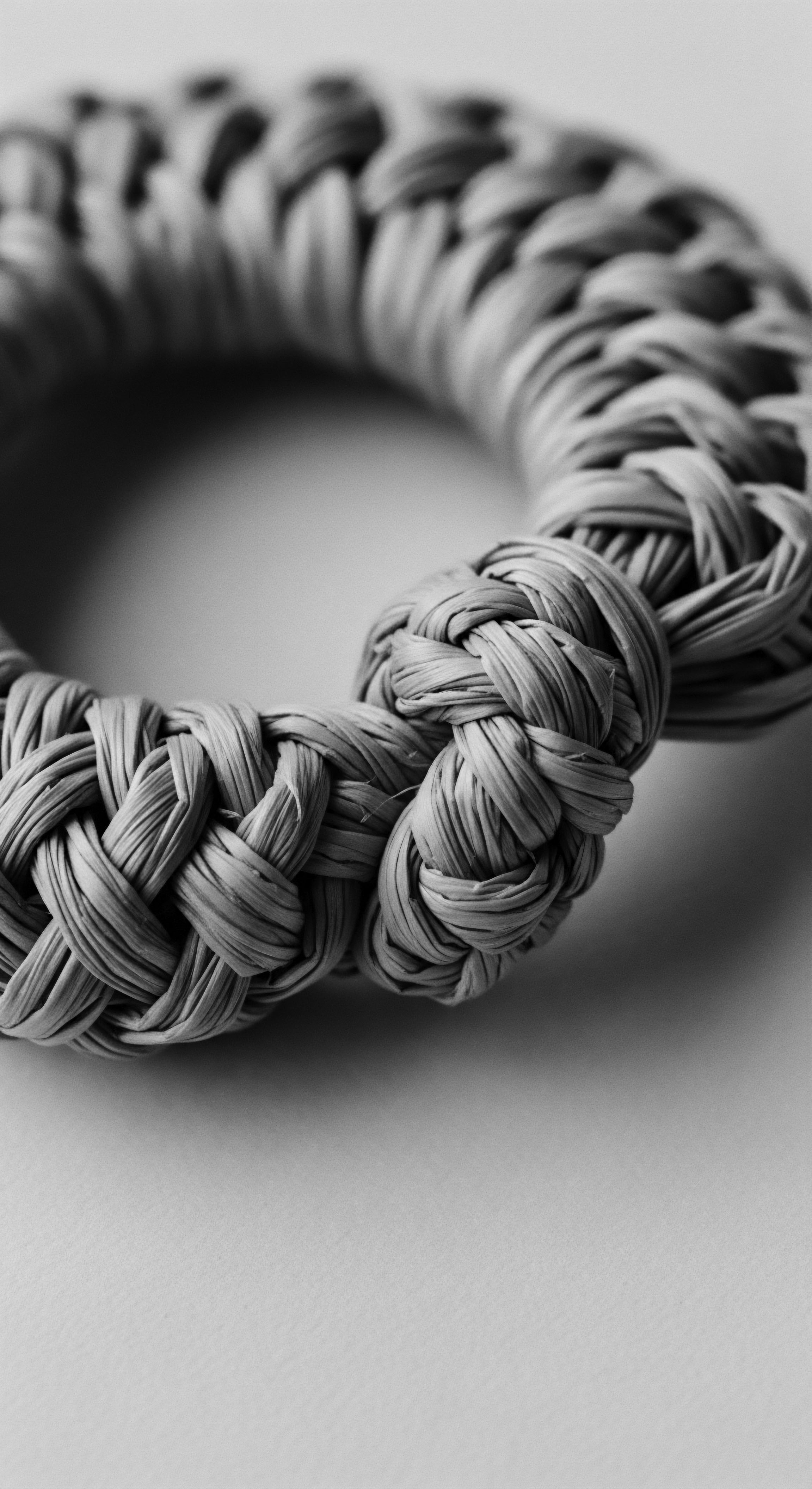
References
- Markiewicz, Ewa, and Olusola C. Idowu. “Exploring the Use of Natural Ingredients for the Protection of Textured Hair from Ultraviolet Radiation ❉ An In Vitro Study.” Preprints, 2024.
- Byrd, Ayana, and Lori Tharps. “Hair Story ❉ Untangling the Roots of Black Hair in America.” St. Martin’s Press, 2001.
- Aiyeloja, Amos A. and Efe L. Bello. “Ethnobotanical Survey of Medicinal Plants Used for Hair and Skin Care by Local Communities of Afar, Northeastern Ethiopia.” Ethnobotany Research and Applications, vol. 28, 2024.
- Sharma, Neha, and Shivani Chaudhary. “Phytochemicals in Hair Care ❉ A Review of Natural Ingredients and Their Applications.” GSC Online Press, 2024.
- Kushwaha, Soniya, and Vipin Singh. “Hair Oils ❉ Indigenous Knowledge Revisited.” Pharmacognosy Reviews, vol. 15, no. 3, 2021.
- Balogun, Oyindamola. “Discovering the Origins of Shea Butter – A Journey to the Heart of Africa.” Vertex AI Search, 2024.
- Livara Natural Organics. “Black History Month ❉ The Rich History of Our African Hair.” Livara Natural Organics, 2023.
- Ciafe. “Shea Butter – Explainer.” Ciafe, 2023.
